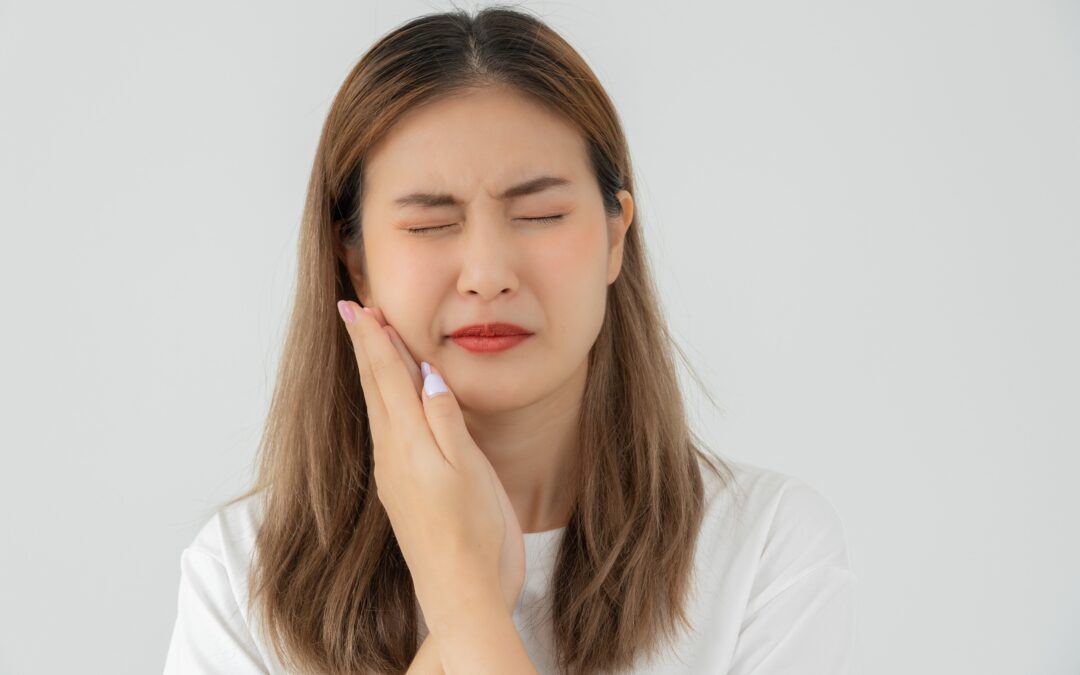Something to Chew On: All About Temporomandibular Disorder (TMD)
Hey guys, today we’re diving into an important topic: TMD, also known as temporomandibular joint dysfunction. If you’re wondering what exactly it is, TMD refers to any pain or discomfort in the mouth and jaw area. In this month’s discussion, we are going to discuss the different types of TMD, diagnosing TMD, treatment options, and some exercises to help alleviate jaw pain.
Getting the Types Down: The Different Types of TMD
Before we talk about treating TMD, it is important to know the differences between the 2 types.
- Muscular TMD: This is typically caused by issues like fascia adhesions, trigger points, or muscular imbalances around the jaw joint. Among these muscles, the masseter plays a significant role and is often implicated in this condition. Some common causes of muscular TMD include neck trauma such as whiplash, car accidents, or even poor posture habits like forward head posture.
- Articular TMD: This is usually associated with the displacement or dislocation of the disc within the temporomandibular joint. This can occur due to various factors like a fractured jaw, dislocation of the jaw, arthritis, or even jaw-related conditions like cancer.
Additionally, certain social factors can also contribute to a TMD diagnosis. Habits like nail-biting, impacted teeth, playing musical instruments extensively, and being overweight can be precursors to developing TMD.
If you or someone you know is experiencing pain in the mouth and jaw area, don’t worry. In this discussion, we’ll guide you through the process of diagnosing and treating TMD in our office. We’ll also share self-care tips that you can practice at home to alleviate discomfort.
What’s the Verdict: How to Diagnose TMD
Diagnosing TMD is a straightforward process that begins with understanding the patient’s symptoms.
- Symptoms: These symptoms can manifest as clicking, popping, or cracking of the joint during mouth movements, as well as restricted opening and closing of the mouth. In some cases, patients may experience their jaw getting stuck in either an open or closed position, often occurring during activities like chewing or speaking. Additional symptoms include pain in front of the ear, neck discomfort, and tinnitus or ringing in the ear.
- Physical Examination: Our primary focus is observing how the patient’s mouth opens and closes. To do this, we palpate the jaw joint and have the patient perform open and close movements while checking for any crepitus or clicking sounds. We also assess for side-to-side lateral deviation of the joint and evaluate whether the mouth opens wide enough for proper mastication.
Continuing with the examination, we palpate the muscles of mastication around the jaw and head, as well as the neck muscles. During this process, we pay close attention to any taut or tender fibers and look for muscular imbalances or asymmetry that could impact our treatment approach.
The findings from this thorough physical examination will serve as a crucial guide in developing an appropriate treatment plan for TMD.
An Alternate Approach: Ways our Office can Treat TMD
With TMJ-related issues, the jaw’s sensitivity can pose a challenge. Given the multitude of muscles involved, we opt for a gentler approach. One of the ways we like to treat TMD is with a technique referred to as dry needling.
Placing the Needles: The needles will be placed to target the muscles linked to the TMJ, often responsible for TMJ-related discomfort. By introducing needles, we can enhance their effectiveness with a touch of electrical stimulation. Now, for those patients who find tissue work too intense, we offer alternatives in our practice.
Alternative Treatment Options: Firstly, we have a skilled massage therapist specializing in TMJ concerns. Her expertise lies in gradually alleviating inflammation around the joint and addressing muscle tension. If a patient’s sensitivity persists, we introduce another option: laser therapy. The laser aids in reducing inflammation and facilitates manual therapy as the patient’s healing progresses.
Getting Involved: At-Home Strategies to Help Manage TMD
Now that we have learned about Temporomandibular Disorder (TMD) in the office, let’s learn some ways to help yourself at home!
- Masseter Stretch: Open your mouth widely and apply pressure on the jaw using your fingers, gently try to close your mouth to match the pressure of your fingers. Make sure not to close all of the way. Once you match the pressure of your fingers, then relax to allow a gradual jaw stretch.
- Self-Release Massage: Start by massaging the tight muscle, then extend the massage to the jaw joint and temporalis muscles just in front of the ears. To enhance relief, employ a “pin and stretch” approach while opening your mouth.
- Spine-Related TMD: TMJ issues can be related to cervical spine problems. For this, we are going to be performing “neck retractions.” Stand against a flat wall or surface, retract your chin backward, hold momentarily, and release. These methods can help alleviate jaw pain or temporomandibular disorder (TMD) discomfort.
If you have any more questions about TMD or how to see us in the office, feel free to call us!

